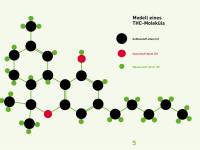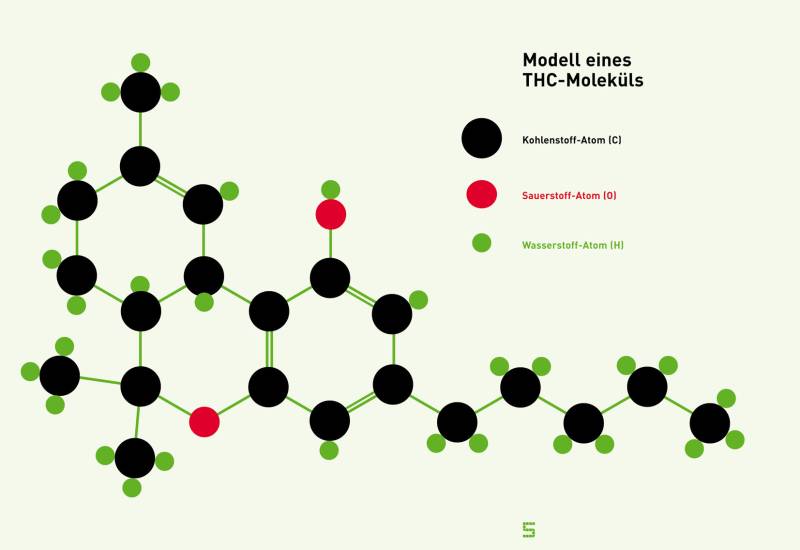- THC & Law:
Trans, levo isomer of delta-9-tetra-hydro-cannabinol (THC).
Cannabis resin is the sticky, delicately fragrant part of the cannabis plant. Good weed contains a lot of it - recognizable by the small white to brown droplets on the flowers, but also on the leaves and stems. Good hashish consists almost exclusively of these resin droplets. The worse it is, the more plant material, soil, sand, dust, screenings, mold and insects it contains.
But what is contained in the resin? Two classes of substances are predominantly represented. One is essential oils (caryophyllene, humulene, beta-farnesene, alfa-selinene, beta-phellandrene and others). These cause the weed or hash to have the typical cannabis scent. The different distribution in different varieties also results in the differences in taste. However, the fragrances have no psychoactive effect. Second, the resin contains the cannabinoids, probably around 60 different ones. Among them, there are those that are not psychoactive or have little psychoactive effect. For example, the cannabidiol (CBD) that is supposed to influence the actual effect. Some say it reduces anxiety. Next, cannabinol (CBN), which is said to have little effect. More rarely also the Cannabichromen (CBC) and as said many more.
The most important cannabinoid is THC. But again, there are quite different ones. Occasionally the delta-8-THC occurs, also the tetrahydrocannabivarin (THCV) can be found. And there are others, both those found in nature and artificially produced ones (some of which have x times the strength of natural THC). So tetra-hydro-cannabinol (THC) is again just a generic term. The THC that we most often get is the trans, levo isomer of delta-9-tetra-hydro-cannabinol.
The vaporization point of THC is about 200° Celsius, and the molar weight is about 314 grams. So if we consume a quarter gram of a good hash containing 20% THC, that means we are ingesting 0.05 grams of THC, which is equivalent to about 100,000,000,000,000,000 molecules (as shown below). The chemical formula is C21H30O2, which means that one molecule of THC is formed by 21 carbon atoms, 30 hydrogen atoms and two oxygen atoms.
The effect varies depending on the strain and the way it is consumed, depending on the mood and the dose. But in all THC ingestors, the molecules dock on nerve cells and cause a change in their way of thinking. In a considerable number of different ways.
Support our work with a donation:
Bank transfer
Account number (IBAN):
CH02 0900 0000 8709 1354 3
Full account details
Or scan this QR code with your eBanking App (ZKB, Revolut, Postfinance, …):

Or open/share the QR code as PDF file with your eBanking App.
Credit card
Donate via credit card
Verein Legalize it!
Quellenstrasse 25
8005 Zürich
Threema ID 7NH65RBY
Don’t miss anything! Follow us on social media:


